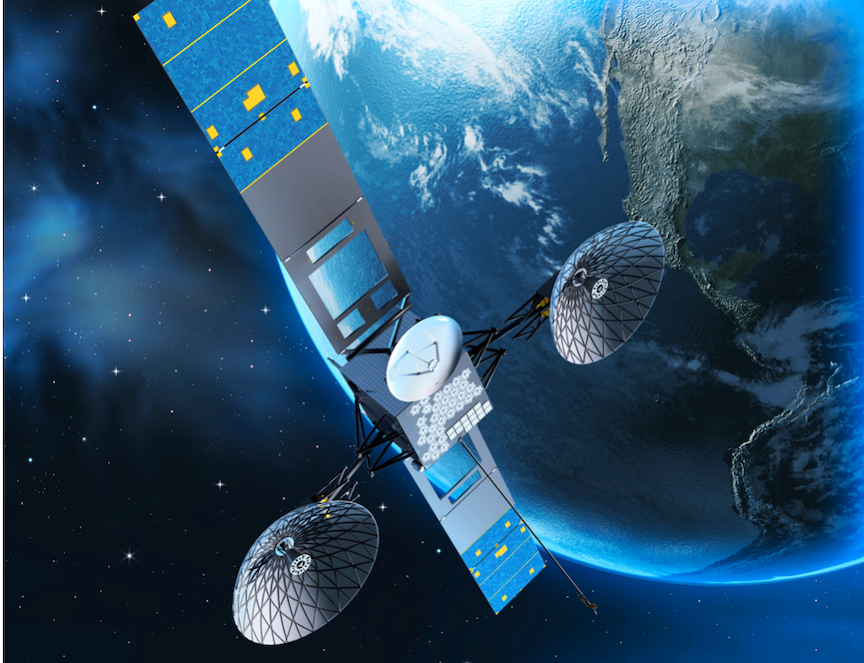
Credits: NASA
For more than a year, the agency has been evaluating the feasibility of employing commercial SATCOM networks for near-Earth operations as it works to decommission its near-Earth satellite fleet.
NASA selected six American satellite communications (SATCOM) providers to begin developing and demonstrating near-Earth space communication services that may support future agency missions.
For more than a year, the agency has been evaluating the feasibility of employing commercial SATCOM networks for near-Earth operations as it works to decommission its near-Earth satellite fleet. This approach would allow NASA to focus more time and resources on its deep space exploration and science missions.
The combined value of the agency’s Communications Services Project (CSP) funded agreements is $278.5 million. NASA expects each company to match or exceed agency contributions during the five-year development and demonstration period, totaling more than $1.5 billion of cost-share investment.
“We are following the agency’s proven approach developed through commercial cargo and commercial crew services. By using funded Space Act Agreements, we’re able to stimulate industry to demonstrate end-to-end capability leading to operational service,” said Eli Naffah, CSP project manager at NASA’s Glenn Research Center. “The flight demonstrations are risk reduction activities that will develop multiple capabilities and will provide operational concepts, performance validation, and acquisition models needed to plan the future acquisition of commercial services for each class of NASA missions.”
Each company has proposed a technical approach to lower costs, increase flexibility, and improve performance for a broad range of missions. The agreements create opportunities to develop innovative solutions that could potentially meet NASA’s future mission requirements while supporting each company’s business model, future customers, and a growing domestic commercial SATCOM market.
The funded companies are:
- Inmarsat Government Inc. of Reston, Virginia, has been awarded $28.6 million. Inmarsat’s proposed approach demonstrates a commercial radio frequency geostationary orbiting L-band relay network for low-rate SATCOM services to spacecraft and launch vehicles for routine missions, contingency operations, launch and ascent, and early operations phase communications.
- Kuiper Government Solutions (KGS) LLC of Arlington, Virginia, has been awarded $67 million. Kuiper’s proposed approach demonstrates a commercial optical low-Earth orbiting relay network for high- and- low-rate SATCOM services to spacecraft in low-Earth orbit for routine missions, contingency operations, and early operations phase communications.
- SES Government Solutions of Reston, Virginia, has been awarded $28.96 million. SES’s proposed approach demonstrates commercial radio frequency geostationary orbiting C-band and medium-Earth orbiting Ka-band relay networks for high- and- low-rate SATCOM services to spacecraft in low-Earth orbit for routine missions, contingency operations, launch and ascent, and early operations phase communications.
- Space Exploration Technologies (SpaceX) of Hawthorne, California, has been awarded $69.95 million. SpaceX’s proposed approach demonstrates a commercial optical low-Earth orbiting relay network for high-rate SATCOM services to spacecraft in low-Earth orbit for routine missions, contingency operations, launch and ascent, and early operations phase communications.
- Telesat U.S. Services LLC of Arlington, Virginia, has been awarded $30.65 million. Telesat’s proposed approach demonstrates commercial radio frequency geostationary orbiting C-band and low-Earth orbiting Ka-band relay networks for high- and- low-rate communications services to spacecraft in low-Earth orbit for routine missions.
- Viasat Incorporated of Carlsbad, California, has been awarded $53.3 million. Viasat’s proposed approach demonstrates a commercial radio frequency geostationary orbiting Ka-band relay network for high- and low-rate communications services to spacecraft in low-Earth orbit for routine launch and missions.
Each company will complete technology development and in-space demonstrations by 2025 to prove their proposed solution will deliver robust, reliable, and cost-effective mission-oriented operations, including the ability for new high-rate and high-capacity two-way communications. NASA intends to seek multiple long-term contracts to acquire services for near-Earth operations by 2030, while phasing out NASA owned and operated systems.
The CSP is managed by NASA Glenn in Cleveland under the direction of the Space Communications and Navigation Program, located at NASA Headquarters in Washington.
